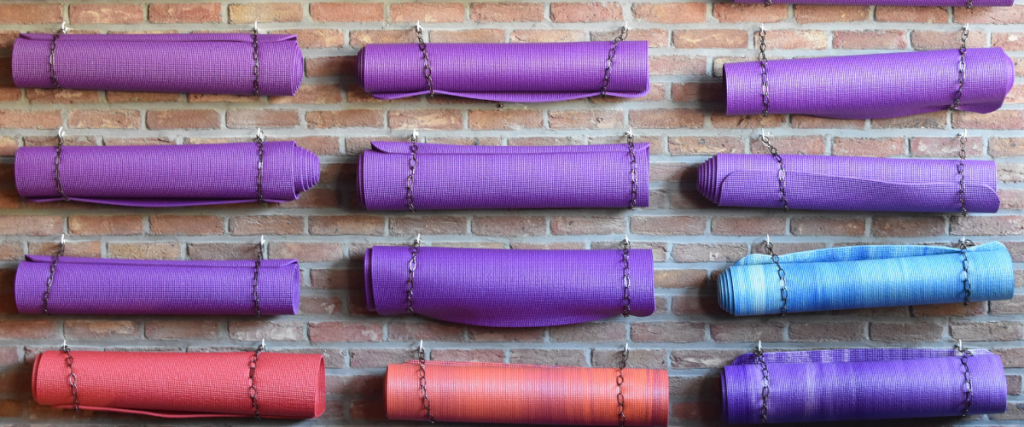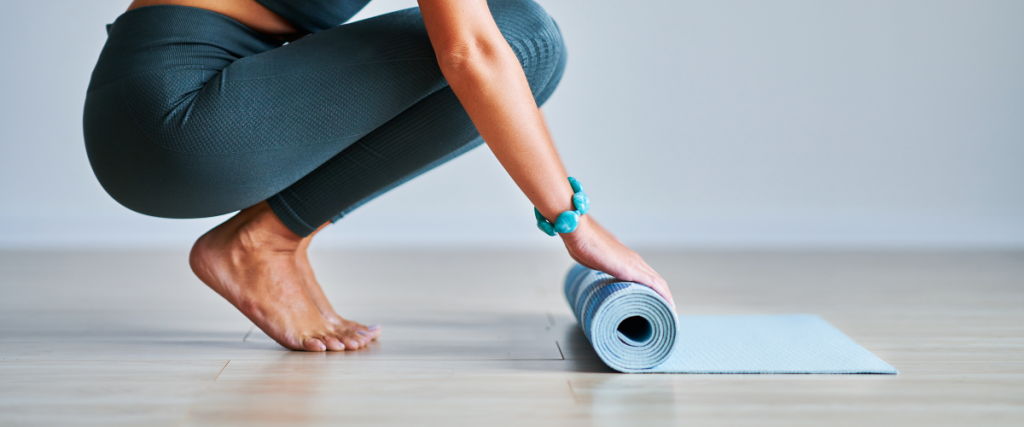
You’ve just decided to embrace the yoga lifestyle and is now looking for your ultimate companion – your yoga mat! Yoga mat materials can be classified in two ways: natural or organic and synthetic.
In addition to the raw material, the manufacturing process and the other substances used or produced may affect just how synthetic it is – sometimes even its toxicity and allergenic levels.
With all that is offered in the market, let this be your guide as we explain the common types of yoga mat materials.
Natural Rubber
This type of material is naturally obtained from latex, the sap of rubber trees that can be found in South America and Southeast Asia. This is different from synthetic or industrial-grade rubber.
Pros of Natural Rubber Mats
- Eco-friendly, biodegradable and natural.
- Makes for a secure grip.
- Highly durable and flexible, providing great cushion.
Cons of Natural Rubber Mats
- Latex may trigger allergies.
- Not as portable because of its thickness and weight.
- May emit a strong smell at first.
- More expensive than other mat types.
PVC (Polyvinyl Chloride)
Also known as vinyl, PVC is one of the first manufactured plastics and probably the most common plastic material in everyday use.
Pros of PVC Yoga Mats
- Cheapest in the market
- Extremely durable and can last for a long time.
- Resistant to bacteria growth, high heat, fire, oil and chemical.
- Convenient and portable. Very easy to store, carry around and wash.
- Has a sticky surface, making for a secure grip and good balance during tricky poses.
Cons of PVC Yoga Mats
- Emits a strong plastic smell.
- Might cause rashes for some.
- Non-recyclable and may produce harmful effects on humans and the environment.
- The material’s deterioration and breakdown takes hundreds of years. Toxic chemicals are released during the process.

TPE (Thermoplastic Elastomer)
Both having thermic and elastomeric properties, TPEs are a mix of plastic and rubber. This is known to be a better alternative to PVC, given the latter’s effects on people and the environment.
Pros of TPE Yoga Mats
- Cost-effective option vs mats made from other eco-friendly materials.
- Lightweight and portable
- Odourless and not known to cause any skin reactions.
- Durable and flexible, serving as a great cushion with a secure grip.
- Can be reused and moulded, but not exactly recyclable.
Cons of TPE Yoga Mats
- Sensitive to sun exposure and will hasten the material’s deterioration.
- Does not absorb moisture well, might cause the mat to be slippery.
- Not recyclable and deterioration take a long time, but does not release toxic or hazardous byproducts.
Cotton
Cotton is considered a better option than other synthetic materials when it comes to sustainability and being biodegradable.
Pros of Cotton Yoga Mats
- Organically produced and sustainable
- Easy to clean
- Has a great absorption of sweat and moisture.
Cons of Cotton Yoga Mats
- Provides less cushion and reduced grip
- May be subject to wear and tear through time
- Some cotton may be genetically modified or produced using a large amount of pesticides, fertilizers, and high water usage.
Jute
This material is sourced from a plant fibre, produced in India, the birthplace of yoga, and its neighbouring countries.
Pros of Jute Yoga Mats
- Biodegradable and eco-friendly
- Durable and has great tensile properties
- Absorbent and breathable. Will prevent mats to be stinky while in storage.
- Easy to clean and weather-resistant.
Cons of Jute Yoga Mats
- Significantly expensive compared to other mats
- Has a coarse texture and provides less cushioning
- May be combined with other materials such as PER or Polymer Environmental Friendly Resin, a material that is less damaging to the environment than PVC

Cork
Cork is harvested naturally from oak trees. Cork yoga mats are usually combined with another material to prevent it from slipping. The top half is cork and the lower half can be made from TPE or natural rubber.
Pros of Cork Yoga Mats
- Sustainable and does not damage the trees during the process.
- Has great absorption properties
- Breathable and disperses body heat
- A good mix of softness and toughness.
- Provides great grip and balance
Cons of Cork Yoga Mats
- Significantly more expensive than generic yoga mats
- Not as easily accessible as mats using other materials
- Reduced flexibility, has poor tensile strength and insulation.
Conclusion
Looking for the perfect mat will entail balancing multiple factors: budget, texture, grip and cushion, durability and the material’s eco-friendliness.
Are you getting your money’s worth? Which qualities are you willing to deprioritize? All these options are available to cater to your preference.
